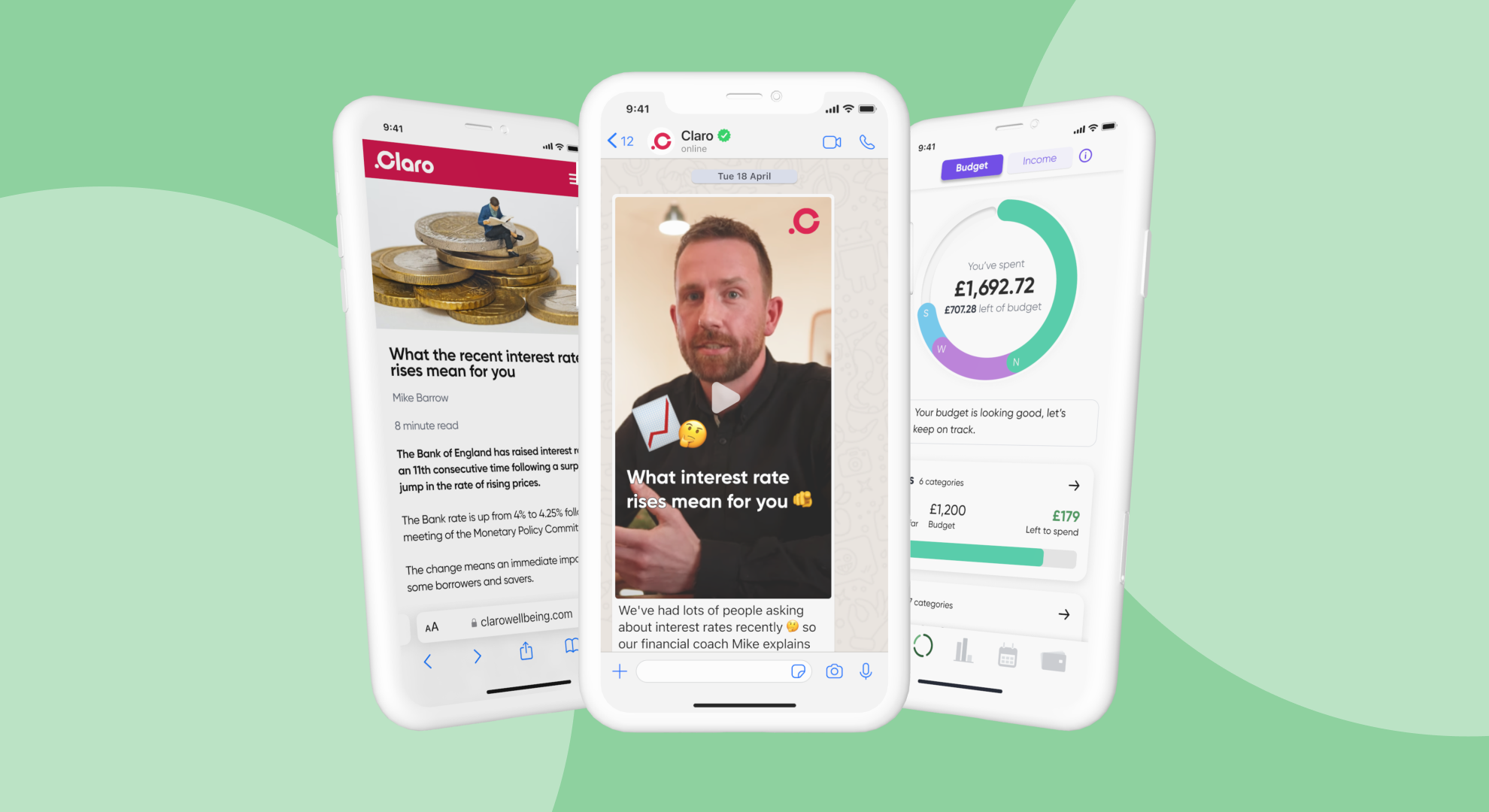6 min read
Should employers acknowledge Blue Monday?
Blue Monday (15 January) has a mixed reputation. But there’s still value in using the day to raise awareness of mental health and wellbeing...
4 min read
 Oliver Gudgeon
28-43-2023
Oliver Gudgeon
28-43-2023

Today, offering financial education for employees is not just a good idea – it's essential. It forms the cornerstone of your employee financial wellbeing programme and can significantly enhance the utilisation of existing financial benefits such as pensions, rewards, and insurance. Moreover, it brings many other advantages to the table.
In this article, you’ll learn:
Financial education is the process of increasing your staff’s personal finance knowledge, skills and confidence, so they can manage money better and live happier lives. It can be achieved through various means, such as online resources, courses and tools, counselling sessions, one-to-one coaching calls and digital programmes.
It’s an area of education that encompasses a wide range of topics, like budgeting, saving money, investing, buying property, getting out of debt and planning for retirement.
When adequate financial education is offered, employees feel in control of their money and future, and make better-informed decisions around money.
Financial education is important for employees because it helps reduce financial stress and anxiety and increase financial resilience and confidence.
According to professional services firm Deloitte, more than 50% of those in the UK would say their finances deteriorated last year.
Indeed, our recent survey of 1,300 UK workers showed that, when it comes to their money, just 27% of working adults feel happy and in control. While 73% feel either concerned, not in control, unhappy, stressed or overwhelmed.
Many things can trigger financial stress, such as making big financial decisions, living paycheque to paycheque, having debt, job uncertainty, comparing oneself to others, increasing bills and costs, taking on a new commitment like starting a mortgage or having a baby, and much more.
If you don’t offer your staff financial education and guidance, it’s likely that instead, they’ll turn to other places during moments of financial stress. For example, they might become dependent on Google search or asking friends or family members.
This leaves too much up to chance – Google does not always turn up accurate or informative results and friends and family do not always have the best guidance.
Meanwhile, academic studies have shown financial education programmes capable of reducing financial stress (for example, see Blanco et al. 2023). Elsewhere, studies (see Theodos et al. 2018) have also shown that one-to-one financial coaching can help achieve positive financial outcomes – like saving money, improving credit scores and reducing debt.
Financial education programmes, then, can help employees make progress on their financial goals and increase their financial resilience and confidence.
In the course of improving their know-how around personal finances, your staff are more likely to realise for themselves the advantages their pre-existing financial benefits offer them. This can in turn translate to greater uptake across financial benefits. And it's part of why we're so passionate about HR leaders using financial education to improve benefit uptake: it's a win-win situation for the employee and the employer.
Financial education can take many forms:
At Claro Wellbeing, we offer a comprehensive education, guidance and one-to-one coaching programme delivered to staff over WhatsApp.
Here are some examples of common goals employees might have, the types of financial education that might be particularly helpful, and the outcomes that could be targeted for each individual.
|
Educational goal |
Type of financial education |
Example financial outcomes |
|
I want to get in control of my spending |
|
I feel I have better control and oversight over how my behaviour influences my spending |
|
I want to get out of debt |
|
I’m working towards a plan I created with a coach to pay off my high-interest debts |
|
I want to create an emergency fund |
|
I understand how to store an emergency fund, how much I need and am working towards creating one |
|
I want to improve my credit score |
|
I understand what has been holding my credit score back and have an actionable plan |
|
I want to improve my habits around money |
|
I recognise how my behaviour is affecting my finances and I’m working on it |
|
I want to buy a house |
|
I understand how the process works and I’m saving for a deposit |
|
I want to save for a specific goal |
|
I’ve created a designated savings target and understand what contributions I need to make |
|
I want to start investing |
|
I am now researching which brokerage accounts suit my needs |
|
I want to sort out my pension |
|
I feel more confident that my pension is heading in the right direction |
Our article Start strong: orient your financial wellbeing strategy with these 12 steps has some pointers to get you started. In essence, these come down to:
While exact benefits vary depending on the level and type of support offered, a financial education programme can bring the following benefits to an organisation.
|
Benefit engagement |
Increased engagement in other financial benefits, such as pensions, reward, insurance |
|
Retention and recruitment |
Increased staff retention and increased competitive edge during hiring |
|
Performance |
Increased staff productivity and motivation |
|
Culture |
Improved company culture by encouraging communication and support |
You can always try out our financial wellbeing ROI calculator to see how a financial wellbeing programme with adequate financial education support could help your organisation.
Popularity for offering financial wellbeing as an employee benefit has been increasing in recent years. Data from PwC published in Raconteur shows that uptake of financial education benefits in the US has been increasing, from 51% in 2012 to 68% in 2023.
Amid the hype, it’s important to be careful when it comes to promoting messages around financial wellbeing – only do so once you have in place a robust financial wellbeing strategy in place. Otherwise, you run the risk of being accused of wellbeing washing – making displays of support for wellbeing washing when the level of support you offer is not yet up to standards.
Think of your financial wellbeing strategy as a long-term commitment to supporting the personal finances of your employees.
Once you do have a sound strategy in place, you can promote it by introducing financial wellbeing as a wellbeing initiative, supported by employee benefits providers. Aim to produce a handful of testimonials from the early adopters of your programme, and slowly build trust with your internal audience around your strategy from there.
Use the financial wellbeing ROI calculator |
 |
|
Calculate how much you could be saving your organisation and its people with a financial wellbeing programme. |

6 min read
Blue Monday (15 January) has a mixed reputation. But there’s still value in using the day to raise awareness of mental health and wellbeing...

4 min read
Ever wished you had a money-whiz friend you could ask anything, as often as you like?

7 min read
Millions are being impacted by financial stress. Yet, until now, workers in frontline occupations have not been able to benefit from educational...